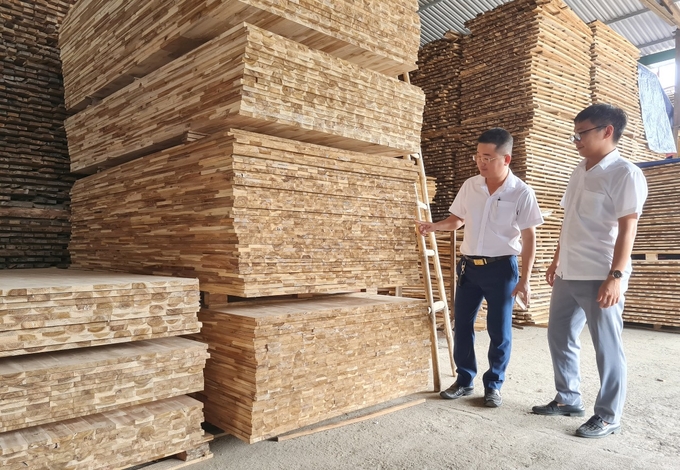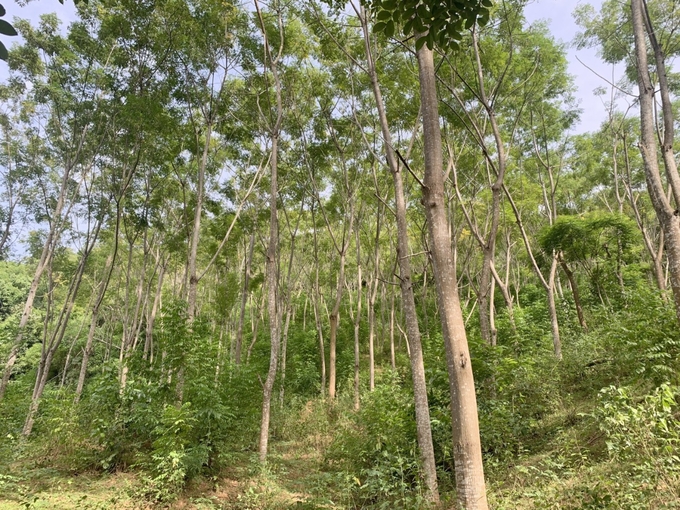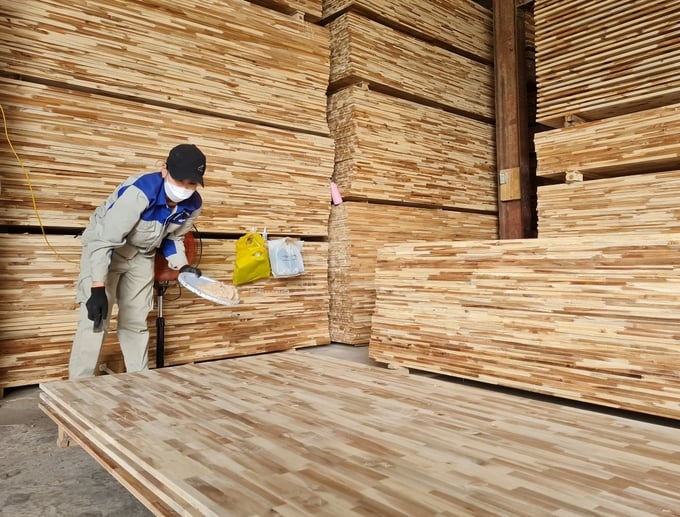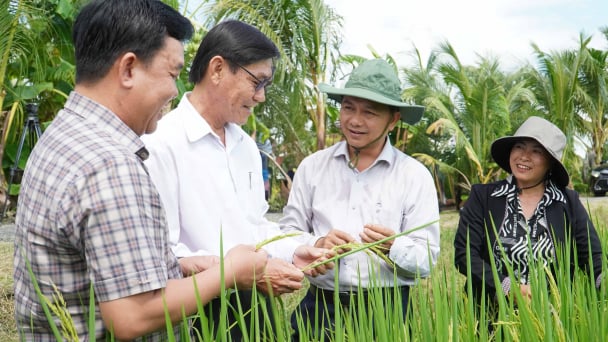June 20, 2025 | 09:54 GMT +7
June 20, 2025 | 09:54 GMT +7
Hotline: 0913.378.918
June 20, 2025 | 09:54 GMT +7
Hotline: 0913.378.918

Nghe An province's wood industry has significantly transitioned in recent years.
With more than 1,008,740 hectares of forested land and forest coverage of 58.41%, Nghe An is the province with the largest forest area in the country. In recent years, the province's plantation forest development has increased rapidly. On average, over 18,000 hectares of concentrated forest can be planted yearly.
The concern is that the productivity, quality, and value of planted forests are not proportional, with an average of only 15-25m³/hectare/year; average exploitation output ranges from 70m3/hectare to 180m3/hectare; The selling price of standing trees is from VND 70-100 million per hectare. Logging output is about 1,500,000m3/year, not including small wood for woodchip materials, accounting for more than 70% of output. The area of intensive afforestation in Nghe An is also tiny, only about 200 hectares per year, mainly in the forest area of the forestry company.
Although the wood processing industry has made significant changes, there is still a particular gap. Currently, the province has about 45 wood processing enterprises and 98 enterprises producing non-timber forest products, not to mention 10,410 individual production and trading establishments for wooden furniture, wood products, and other products.

The quality of Nghe An plantation forests must be improved, thereby rapidly increasing the area certified for sustainable forest management.
The number of enterprises operating in the forest products field is quite large, but the processed products are not rich and have not been exploited to their full potential. Through preliminary understanding, the average annual export value is only about US$ 110-130 million, accounting for 20% of the whole province's total export turnover. This concerns localities with significant advantages of forests like Nghe An.
Although there are still many "bottlenecks", the Nghe An forestry industry is expected to take off soon, especially when many enterprises (Thanh Hoa, Biomass Full Vietnam, BVN Thanh Chuong, An Viet Phat...) know how to handle it quickly catch the development trend and requirements of export markets, thereby speeding up the process of joint ventures and association with people to implement the certification of sustainable forest management.
Through this, the initial step has created a positive change in the awareness of people and forest owners about the role and value of the certification of sustainable forest management, thereby contributing to significantly improving the value of forests, increasing forestry production activities, ready to conquer potential export markets such as EU, US, Japan...
Nghe An has set a target that by 2025, the average productivity will be increased to 20-30m³/hectares/year, and the logging output from planted forests will reach 2.0 million -2.2 million m3/year. Large timber plantation area and intensive plantation forest accounts for 30% of the province's planted forest area. The forest area certified for sustainable forest management is over 50,000 hectares, bringing the export turnover of wood and non-timber forest products in the 2020-2025 period to over US$ 1 billion.

Foreign markets favor products of Song Hieu Forestry and Agriculture Company Limited.
To accomplish the goal, it is not possible to say it, but it is necessary to have a specific and radical solution. Based on the actual situation, Nghe An determined to focus on implementing synchronously the contents of Directive No. 10/CT-TU dated October 5, 2021, of the Standing Board of the Provincial Party Committee on promoting the development of raw material areas. High-quality intensive plantation forests are associated with the certification of sustainable forest management and forest product processing industry in the 2021-2025 period.
The implementation process should focus on promoting legal propaganda and education, creating a significant change in awareness, consciousness, and responsibility of officials, party members, communities, households and communities, and forest owners to manage, protect, and develop forests.
Also, it is necessary to focus on promoting land allocation in association with forest allocation, urgently reviewing and assessing the material development areas of existing afforestation projects. Resolutely end projects with ineffective raw material areas, slow-to-implement tasks that waste forestland resources, and hinder other potential investors.
According to the statistics of Nghe An Forest Protection Department, the whole province has 10,289 hectares of forest having sustainable forest management certification (FSC), of which the planted forest area is 9,450 hectares (Thanh Hoa Co., Ltd. 2,886, 57 hectares; Thanh Chuong BVN Timber Company 3,763.37 hectares; Le Duy Nguyen afforestation enterprise 820 hectares; An Viet Phat Forestry Cooperative 1,980 hectares. In addition, about 13,000 hectares of planted forests in Anh Son, Thanh Chuong, Quy Hop, and Nghi Loc districts are assessed and progress toward sustainable forest management certification.
Translated by Ha Phuc
/2025/06/17/3942-2-143243_548.jpg)
(VAN) Recently, in Sweden, the Secretary of the Binh Dinh Provincial Party Committee presented the Investment Registration Certificate for the 'Polyester Fabric Recycling Complex' project to SYRE Impact-AB Company.
/2025/06/12/3721-2-202745_83.jpg)
(VAN) TH made an impression at Seoul Food 2025 with its line of natural beverages, paving the way for Vietnamese food products to enter the South Korean market.

(VAN) Soc Trang's success in rice exports stems from a strategy of developing fragrant and specialty rice cultivation areas and standardizing production toward low-emission practices.
/2025/06/11/1311-5-120811_839.jpg)
(VAN) The pig farming industry is facing the challenge of comprehensive restructuring to meet requirements for quality, safety, traceability, and market expansion both domestically and for export.

(VAN) Vietnam considers participating in ALGROALBA in order to expand agricultural production, coordinate the assessment and effective exploitation potential land.
/2025/06/05/5314-1-184727_407.jpg)
(VAN) From seemingly worthless fish scales and skin, enzymes and lactic ferments can transform by-products into peptides, opening a sustainable, effective business direction and elevating Vietnamese seafood.

(VAN) TTC AgriS and IFC signed a strategic partnership to develop a sustainable agricultural value chain, aiming to achieve the Net Zero target by 2035.